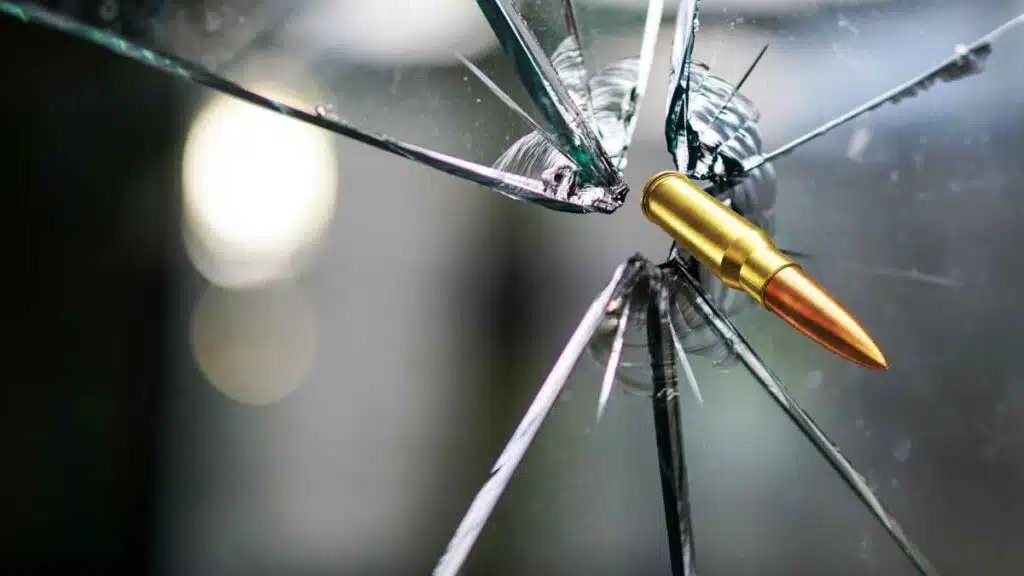Can Glass Really Shatter Bullets?
No, glass cannot shatter bullets. Bullets are typically made of materials like lead or copper, which are much more brittle than glass. When a bullet impacts glass, it may create a hole or crack in the glass, but it is unlikely to shatter it completely. On the other hand, bullets can easily penetrate and pass through the glass, depending on their velocity and the thickness of the glass.

The misconception that glass can shatter bullets is often perpetuated by movies and television shows, where dramatic effects are often prioritized over scientific accuracy. In reality, bullets are much more likely to penetrate glass than shatter it.
The Composition of Glass
Glass is an amorphous, transparent solid made from silica, soda, and lime. The absence of a crystal structure gives it unique properties such as transparency and brittleness. While glass may appear fragile, it has a complex molecular structure that determines its strength and ability to withstand external forces.
When a bullet strikes a surface, it transfers its kinetic energy, causing deformation or damage to the target material. The impact can result in penetration, fragmentation, or deformation, depending on the properties of the material and the bullet’s velocity and design.
The Myth of Bulletproof Glass
The term “bulletproof glass” is commonly used, but no glass can be completely “bulletproof.” Instead, it is more accurate to refer to it as “bullet-resistant glass.” Bullet-resistant glass is engineered to slow down and disperse the energy of a bullet, reducing its lethality and preventing complete penetration.
How Bulletproof Glass Works?
Bullet-resistant glass typically consists of layers of glass and plastic laminates. The glass layers absorb the initial impact energy, while the plastic layers help to keep the glass intact, preventing it from shattering upon impact. The combination of these materials creates a barrier that can withstand bullet strikes.
The Role of Thickness and Laminates
The effectiveness of bullet-resistant glass depends on its thickness and the number of laminates. Thicker glass with more layers of laminate can withstand higher-velocity bullets, offering enhanced protection. However, there is a trade-off between thickness and visibility, as thicker glass may reduce transparency.
The Limitations of Bulletproof Glass
Despite its capabilities, bullet-resistant glass has its limitations. Extremely high-velocity bullets or armor-piercing rounds may still penetrate the glass, albeit with reduced force. Additionally, sustained gunfire or multiple impacts in the same area can compromise the glass’s integrity over time.
Advances in Bullet-Resistant Materials
Advancements in materials science have led to the development of new bullet-resistant materials. Some incorporate ceramics, thermoplastics, and even nanotechnology, offering higher levels of protection while maintaining transparency and reducing the weight of the glass.
The Use of Glass in Body Armor
Glass is not limited to architectural applications; it has also found its way into body armor design. Bullet-resistant vests with glass-ceramic components provide lightweight protection to law enforcement and military personnel, enhancing their safety in dangerous situations.
Safety Precautions and Standards
The manufacturing and installation of bullet-resistant glass must adhere to rigorous safety standards. Various testing procedures evaluate the glass’s resistance to different bullet types and velocities, ensuring its reliability and effectiveness in real-world scenarios.
Can Glass Shatter Bullets?
Now that we have explored the science behind bullet-resistant glass, it’s time to debunk the myth. Glass, in its conventional form, cannot “shatter” bullets like in action movies. Instead, bullet-resistant glass is designed to absorb and disperse the bullet’s energy, significantly reducing its velocity and preventing full penetration.
Real-Life Examples
Numerous real-life incidents demonstrate the effectiveness of bullet-resistant glass. From armored vehicles to government buildings and financial institutions, bullet-resistant glass has saved lives and protected valuable assets during armed attacks.



Leave a Reply